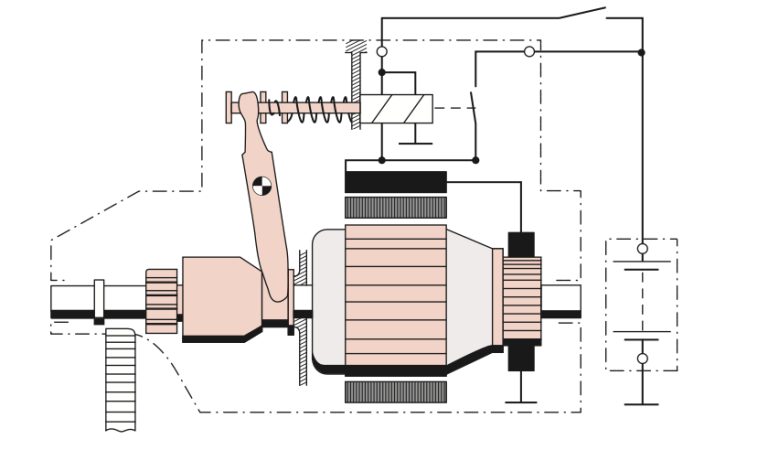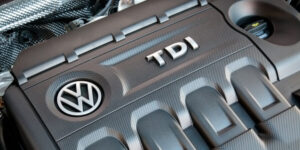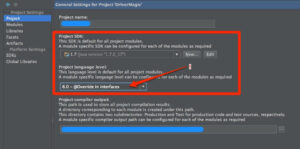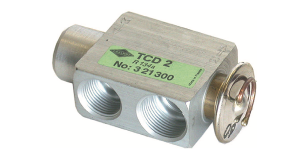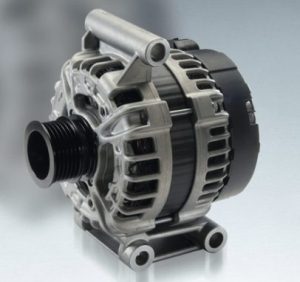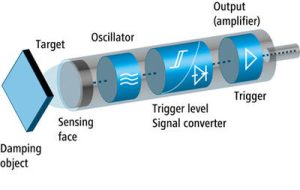A starter circuit is an electrical circuit that is responsible for starting an internal combustion engine. The starter circuit is comprised of several components that work together to provide the necessary electrical power to the engine’s starter motor. In this blog, we will discuss the function of the starter circuit and the components that make it up.
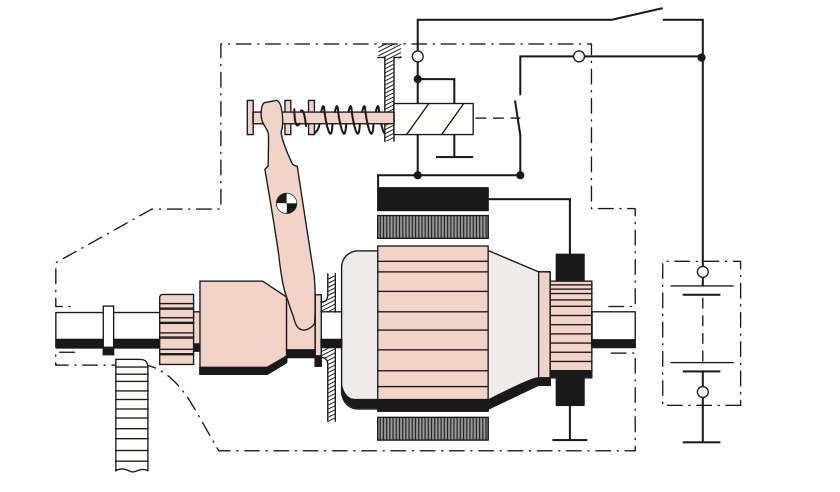
Function of the Starter Circuit The starter circuit is responsible for providing the electrical power to the engine’s starter motor. The starter motor is what turns the engine over and gets it started. The starter circuit must provide the necessary power to the starter motor to ensure that the engine starts quickly and efficiently. The starter circuit is activated when the driver turns the ignition key to the “start” position.
Components of the Starter Circuit The starter circuit is made up of several components that work together to provide the necessary electrical power to the engine’s starter motor. These components include the battery, the starter solenoid, the starter motor, and various wiring and connectors.
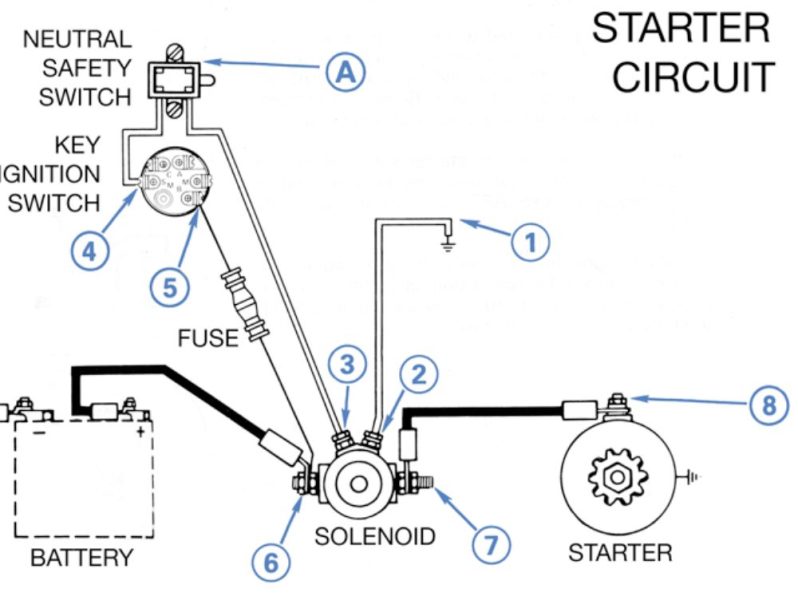
Battery: The battery is the primary power source for the starter circuit. It provides the electrical power needed to turn the engine over and get it started. The battery must be in good condition and fully charged to ensure that it can provide the necessary power to the starter motor.
Starter Solenoid: The starter solenoid is a switch that is activated when the driver turns the ignition key to the “start” position. The starter solenoid is responsible for engaging the starter motor and providing the necessary power to turn the engine over. The starter solenoid is typically located on the top of the starter motor.
Starter Motor: The starter motor is what turns the engine over and gets it started. The starter motor is connected to the engine’s flywheel and uses a small gear to engage the flywheel and turn the engine over. The starter motor is typically located on the bottom of the engine block.
Wiring and Connectors: The wiring and connectors in the starter circuit are responsible for connecting the battery, starter solenoid, and starter motor together. The wiring and connectors must be in good condition and free from corrosion or damage to ensure that they can provide the necessary electrical power to the starter motor.
Conclusion The starter circuit is an essential part of an internal combustion engine. It is responsible for providing the electrical power needed to turn the engine over and get it started. The starter circuit is made up of several components, including the battery, starter solenoid, starter motor, and wiring and connectors. It is important to ensure that all of these components are in good condition and working properly to ensure that the engine starts quickly and efficiently.
When the driver turns the ignition key to the “start” position, the starter circuit is activated. The battery sends electrical power to the starter solenoid, which then sends power to the starter motor. The starter motor turns the engine over by engaging the flywheel, which in turn rotates the engine’s crankshaft. This motion starts the combustion process, and the engine begins to run.
The starter solenoid is an important part of the starter circuit because it acts as a switch that controls the flow of electrical power to the starter motor. When the driver turns the key to the “start” position, the starter solenoid receives power from the battery and engages a small gear that meshes with the engine’s flywheel. This gear engagement turns the engine over and allows it to start running.
One of the most common problems with the starter circuit is a weak or dead battery. If the battery is not providing enough power to the starter motor, the engine may turn over slowly or not at all. Another common issue is a faulty starter solenoid, which can prevent the starter motor from receiving the necessary power to turn the engine over.
It’s important to properly maintain the starter circuit to ensure that it operates efficiently and effectively. This can involve checking the battery for corrosion or damage, inspecting the wiring and connectors for wear or damage, and testing the starter solenoid and motor to ensure that they are functioning properly.
In summary, the starter circuit is a vital component of an internal combustion engine, responsible for providing the necessary electrical power to the starter motor. By ensuring that the battery, starter solenoid, starter motor, and wiring and connectors are all in good condition and working properly, you can help to ensure that your engine starts quickly and reliably every time you turn the key.
Advantages of the Starter Circuit:
- Efficient engine starting: The starter circuit is designed to provide the necessary electrical power to the starter motor, ensuring that the engine starts quickly and efficiently. This can help to reduce wear and tear on the engine and prolong its lifespan.
- Reliable performance: When properly maintained, the starter circuit can provide reliable and consistent performance, allowing the engine to start reliably every time.
- Easy to use: The starter circuit is activated by simply turning the ignition key, making it a simple and easy-to-use system.
Disadvantages of the Starter Circuit:
- Battery issues: One of the main disadvantages of the starter circuit is that it relies on a battery to provide the necessary electrical power. If the battery is weak or dead, the engine may not start, causing inconvenience and potentially expensive repairs.
- Wear and tear: The starter circuit is subject to wear and tear over time, which can result in component failures and reduced performance. Regular maintenance and inspection can help to reduce the risk of these issues.
- Electrical issues: The starter circuit is an electrical system, which means that it can be affected by electrical issues such as wiring faults or component failures. These issues can be difficult to diagnose and repair, and may require the services of a trained professional.
In conclusion, while the starter circuit provides many advantages, such as efficient engine starting and reliable performance, it also has some disadvantages, including potential battery issues, wear and tear, and electrical issues. Proper maintenance and care can help to minimize the risks and ensure that the starter circuit performs effectively and efficiently over the long term.

